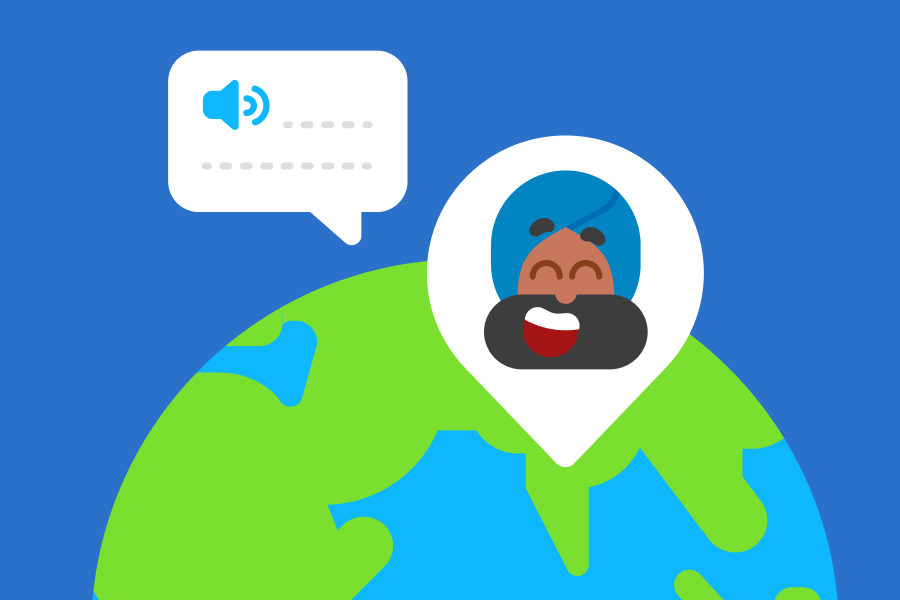Duolingo’s growth in India has been faster than every other market this year. While COVID-19 lockdowns have led to all-time-high traffic on Duolingo globally, new learners in India increased 400% year-over-year.
A large fraction of these new learners are also newly online. Between 2017 and 2022, over 500 million Indians will have come online for the first time ever. This is because Jio, an Indian telecom company, brought about a mobile data revolution where Indians enjoy 1.5GB of data per day for just $6 per month. In addition, Android smartphones have gotten dramatically cheaper and thus more accessible for many people.
These newly-online users in India are similar to our global learners but also different in a few key ways. We’ve done a lot of things across product and marketing to grow quickly among newly-online users in India. Here are 3 particularly interesting insights we’ve learned while building for them:
Most English learners in India use their device in English
In almost every country in the world, most learners have their phone’s language set to the native language of their country. We were surprised to discover that over 95% of English learners in India had mobile phones set to English. This resulted in two issues:
First, our English-language app title, screenshots, and description on Google Play was our global default—it didn’t mention you could learn English at all! So, we made a custom listing for English in India that heavily focuses on learning English, since half of our existing learners on Duolingo in India were learning English.
Second, on Duolingo we showed languages you can learn based on your phone language. We included an “English” option but it was in the middle of the list and so some learners with English as their phone language didn’t realize we had an English course for Hindi speakers. So, we ran an experiment that showed the English course for Hindi speakers at the top of the list of courses in Hindi, regardless of your phone language. This led to a 2% gain in daily active users!
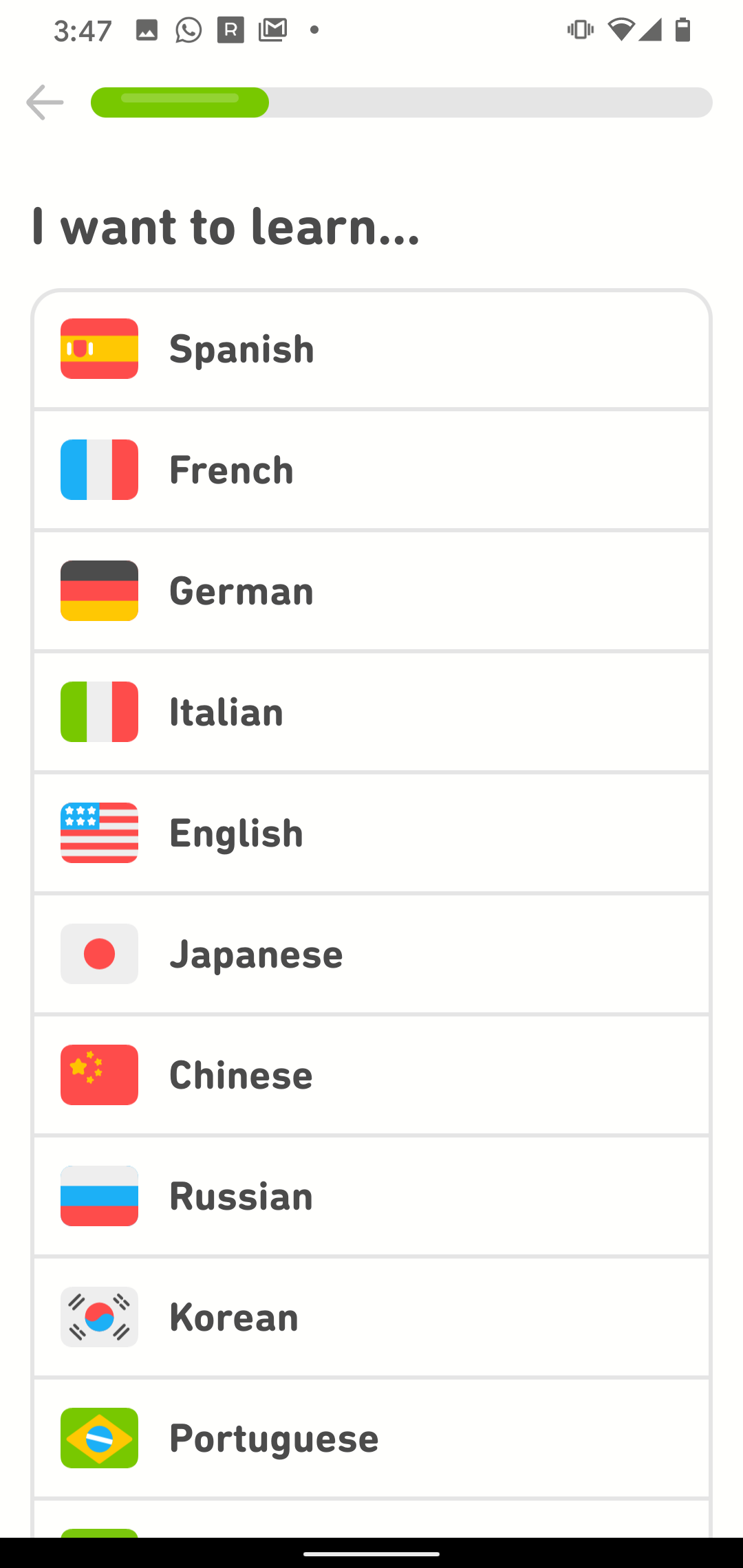
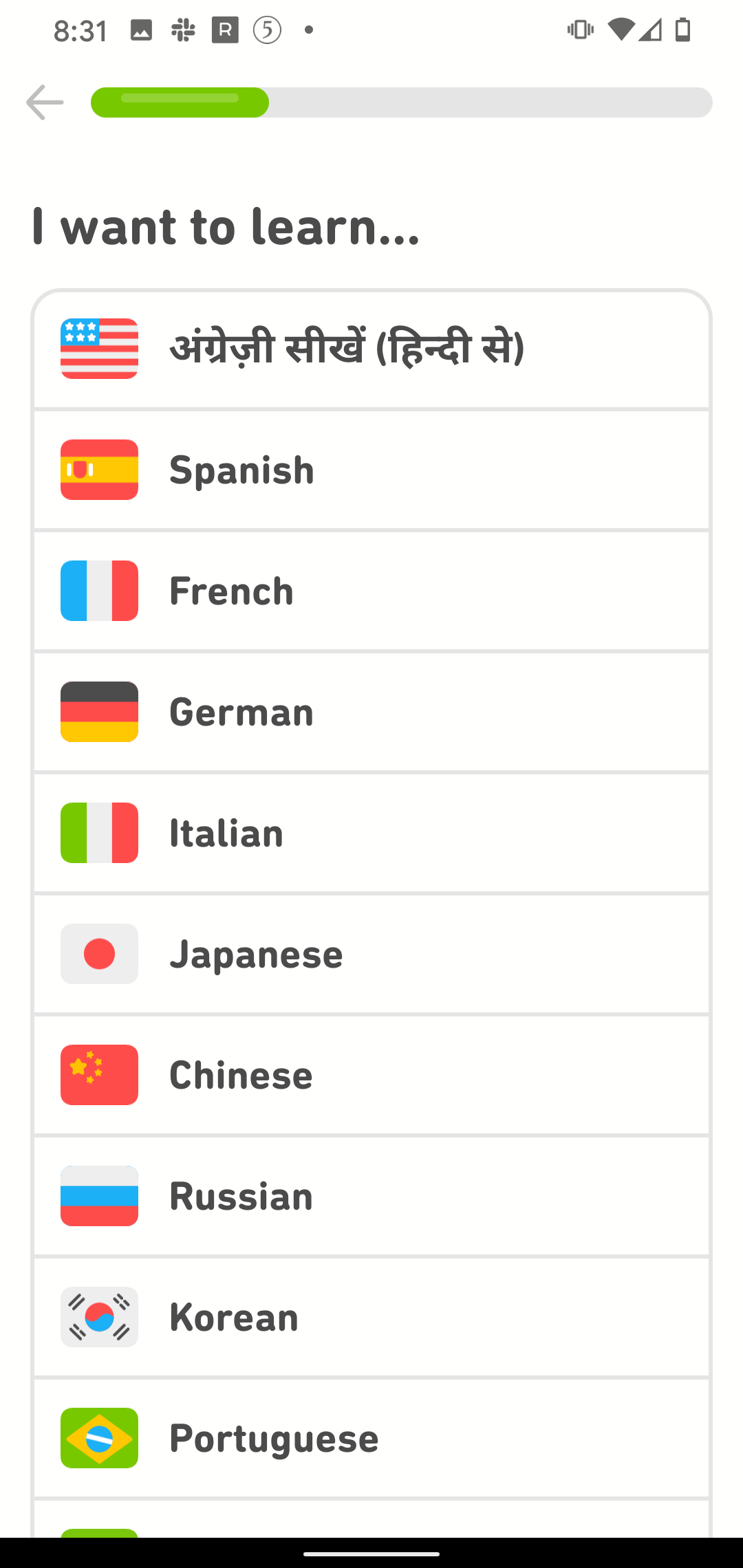
Colloquial Hindi is very different from literary Hindi, which creates challenges with localization
Through user research, we realized that our Hindi UI was actually often too hard for even native Hindi speakers to understand! We were using Hindi words that were technically accurate, but uncommon in everyday Hindi. For example, our in-app currency was “मणि” (mani) in Hindi, but our interviewed users referred to it using the English words “coin” or “diamond.”
Hindi speakers tend to use a lot of English words, especially in the context of teaching and technology. For example, English words like “lessons” and “levels” are more commonly used than their respective Hindi translations. So, during our onboarding, we replaced Hindi words with “language” and “level” written in English, which led to a 1% increase in onboarding completion.
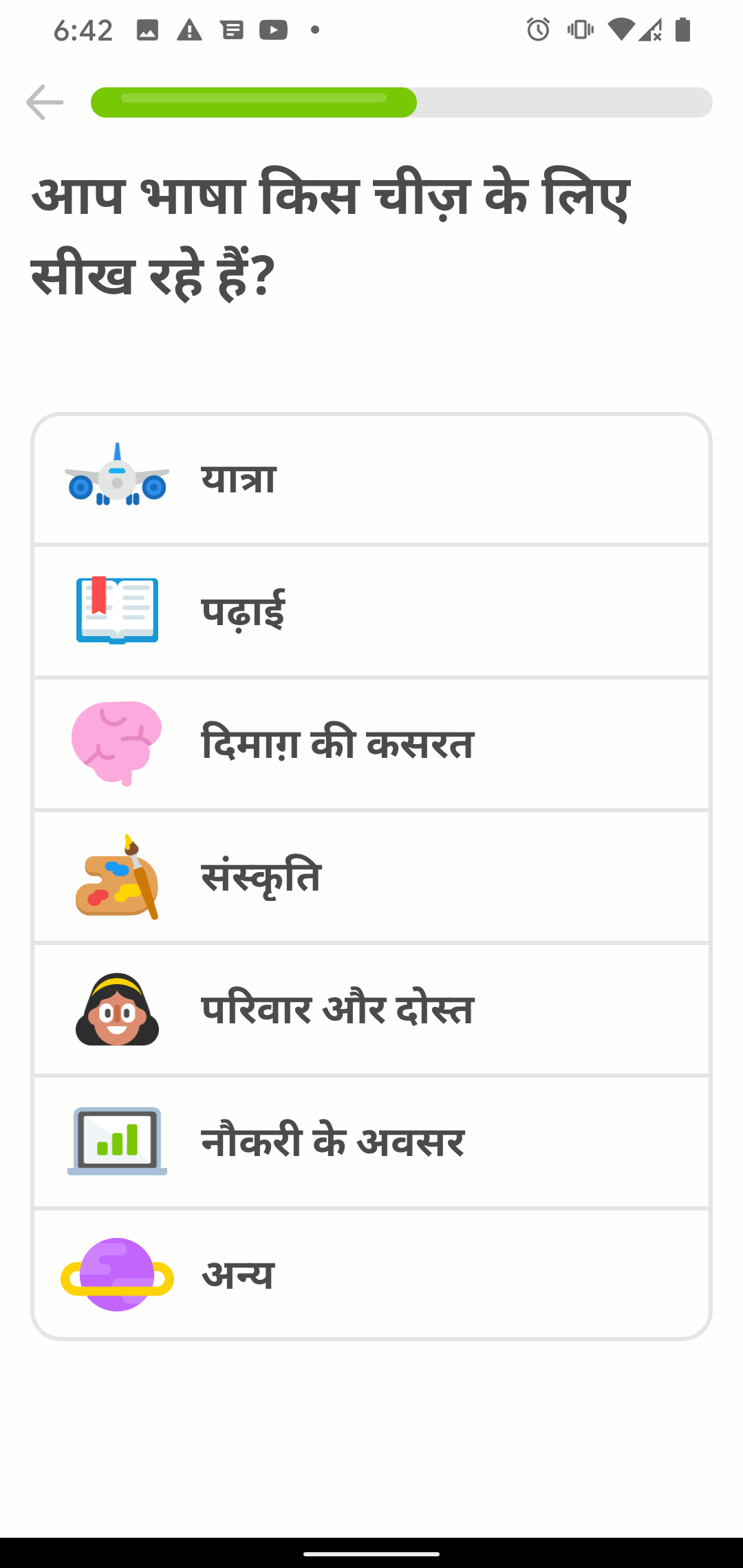
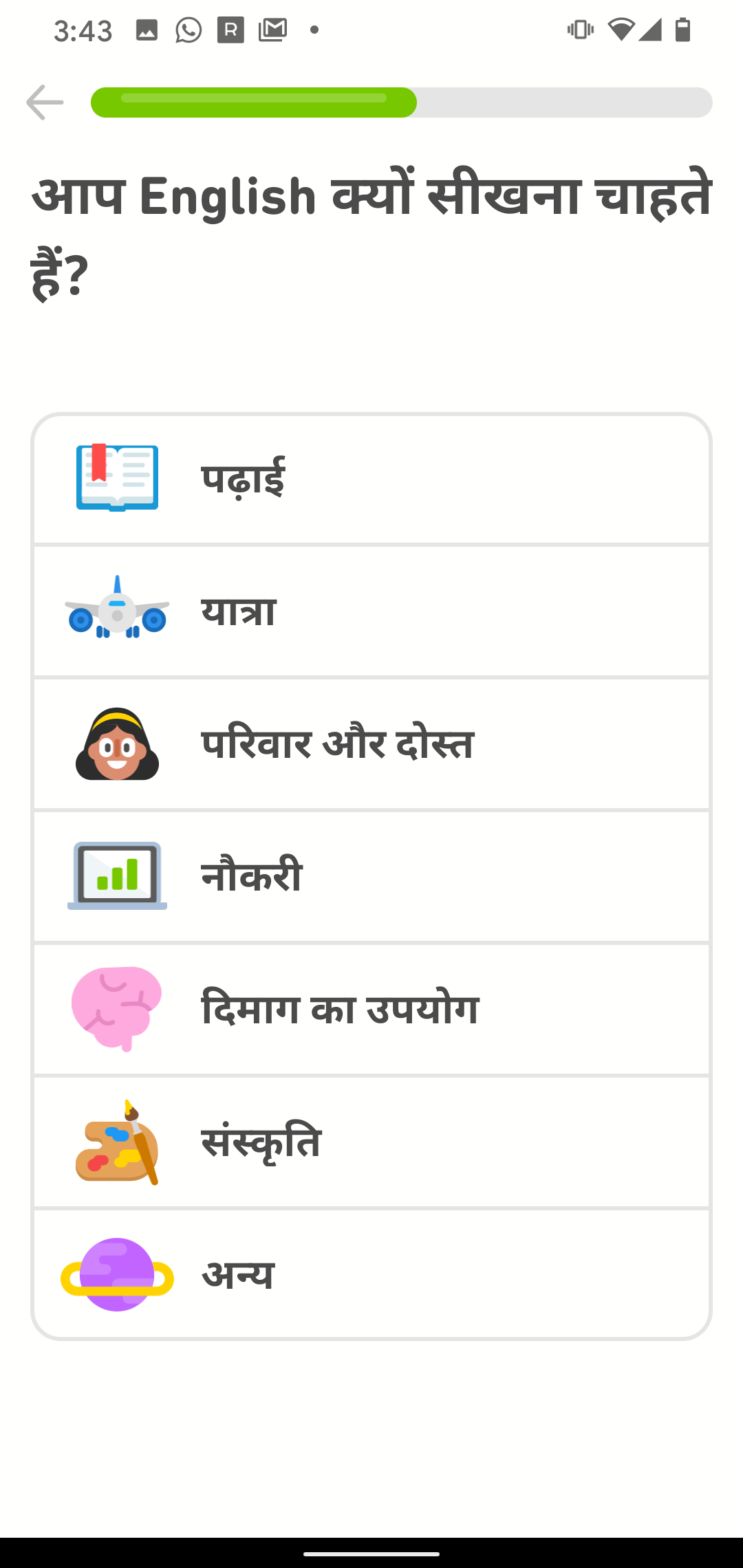
App subscriptions are not a familiar concept to newly-online learners in India
While all the learning content on Duolingo is free, we monetize through Duolingo Plus, a premium subscription that offers learners an ad-free experience, offline access, and other benefits.
Like other apps, we promote this premium subscription to learners on the free plan. In India, however, we realized that English-learners who saw this promotion were often just tapping through because they tended to tap on the most prominent button on the screen. These learners would see this promo, assume they had hit a paywall, and churn. In addition, multiple learners that we interviewed, upon seeing this screen, said they’d prefer a one-time fee over a recurring subscription.
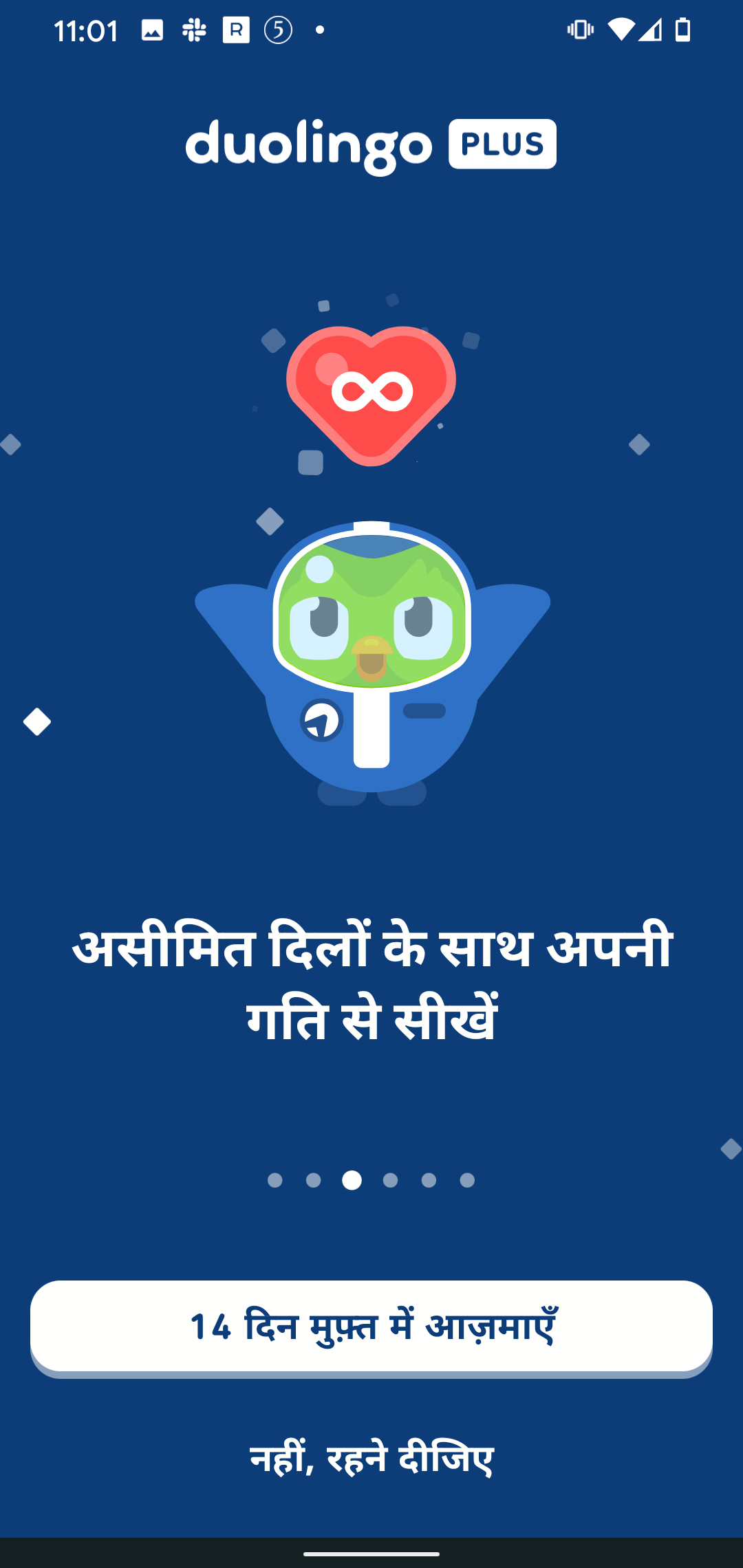
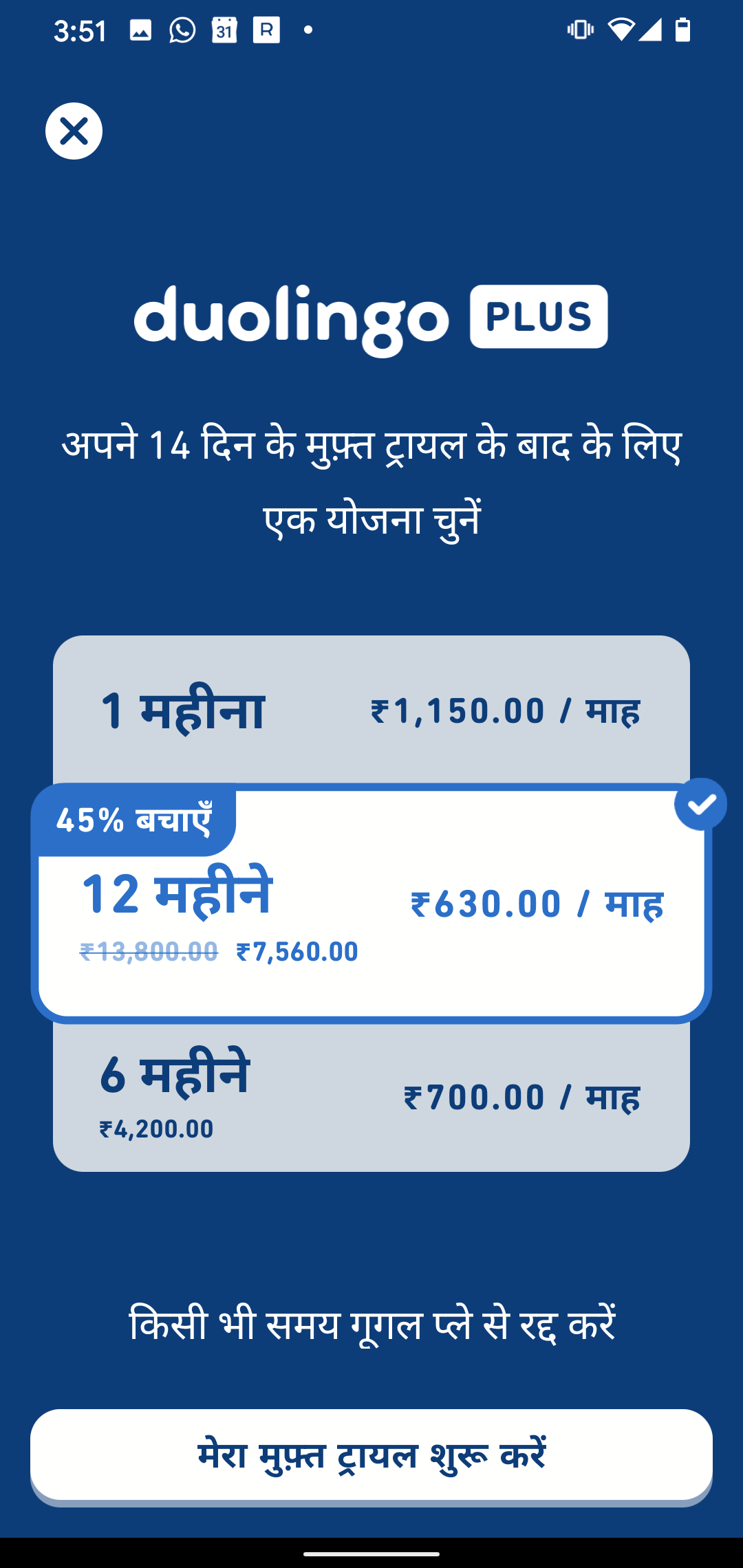
To solve this, we first just removed the initial promotion of Duolingo Plus in a new learner’s lifecycle and saw a 1% increase in DAUs. Then, we realized that there were several confusing aspects of Duolingo Plus for newly-online learners. Because we wanted to grow in these markets first and monetize later, we decided to completely remove Duolingo Plus in India (along with a few other Asian countries), which led to a 6% increase in DAUs.
Through our efforts in India, we’ve been able to successfully apply our learnings to other markets with newly-online learners as well. These learnings are just the tip of the iceberg as we continue to fulfill our mission of developing the best education in the world and making it universally available, enabling the next billion people coming online to learn languages and make better lives for themselves.
